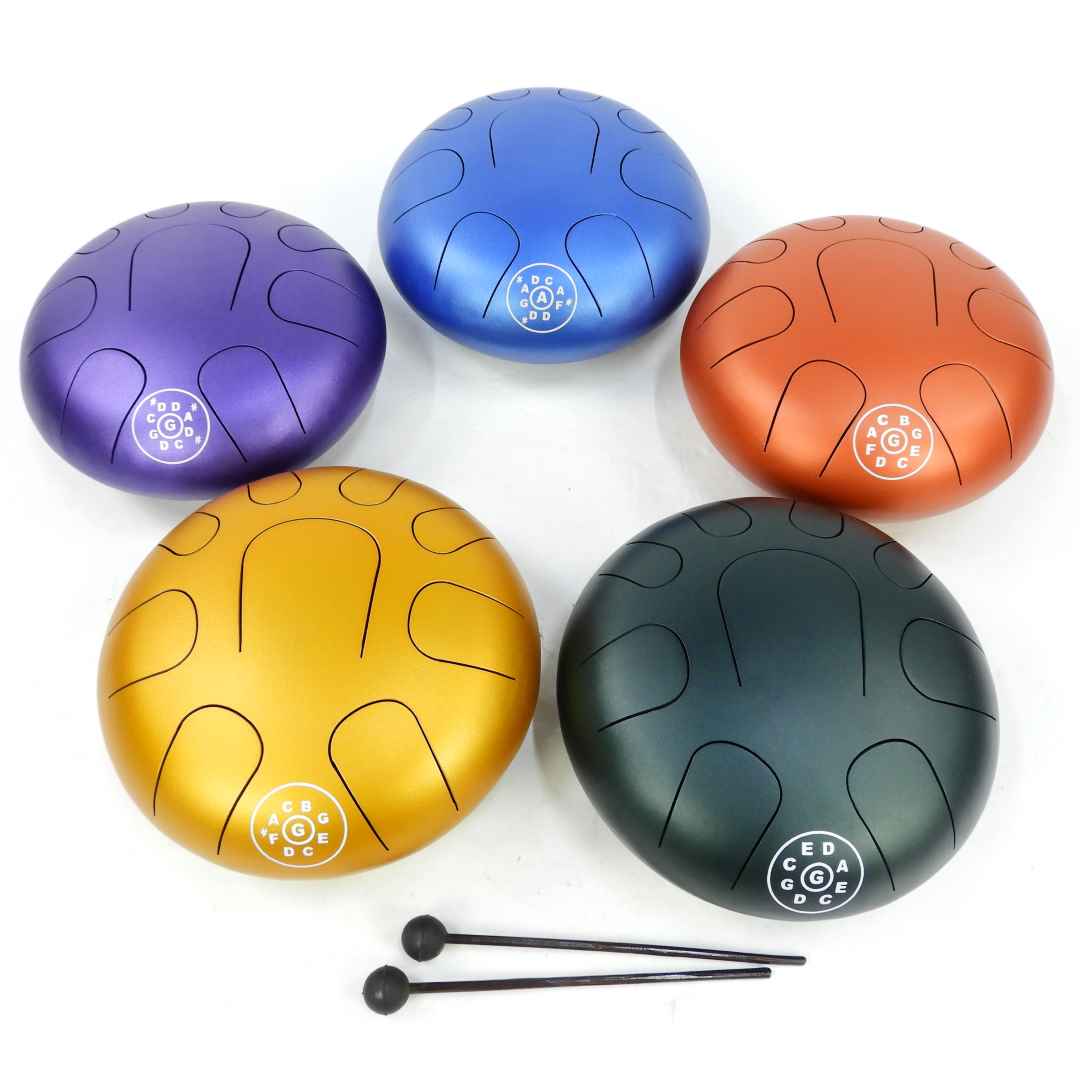Choosing the Right Steel Tongue Drum: Tips for Finding Your Ideal Sound
The steel tongue drum, with its mesmerizing, melodic tones, has captured the hearts of sound healers, musicians, and anyone seeking a unique and calming instrument.
But with so many variations available, selecting the right drum to suit your needs can feel like a big decision.
Here’s a guide to choosing the steel tongue drum that resonates with your musical journey, whether you’re starting out or refining your sound.
What is a Steel Tongue Drum?
A steel tongue drum, also known as a tank drum or hank drum, is a percussion instrument crafted from steel, producing gentle, soothing tones. Often tuned to a pentatonic scale, it offers a harmonious, easy-to-play experience that’s accessible to beginners and beloved by seasoned musicians alike.
Its versatility makes it ideal for sound healing, meditation, personal relaxation, and creative expression.

1. Define Your Purpose for the Steel Tongue Drum
Understanding how you intend to use the steel tongue drum can help you narrow down the specifics:
Sound Healing and Meditation: If you’re drawn to the drum for sound healing or meditation, you’ll want a tuning that promotes calm and tranquillity.
Pentatonic minor scales are especially popular here, creating a grounded, introspective sound that encourages relaxation.
2. Explore Different Tunings
One of the most critical elements to consider is the drum’s tuning.
Each tuning lends itself to a unique feel, impacting how you’ll use the instrument and the emotions it can evoke:
Pentatonic Minor (D, C, or E): Pentatonic minor tunings are the most common for steel tongue drums, especially popular for sound healing and meditation.
Minor tunings (like D or E minor) create a deep, reflective, and slightly melancholic atmosphere.
D minor offers a slightly richer, more resonant sound, while C minor gives a softer, mellow tone.
E minor has a more balanced, versatile sound, which is ideal for grounding energy in meditation.
Pentatonic Major (G, C): For a brighter, uplifting sound, a pentatonic major tuning, such as G or C major, can add joy and positivity. G major tuning is particularly rich, with a full-bodied resonance, great for invoking a sense of joy and wonder.
C major brings a soft, lighter tone, which can feel calming yet lively.
Music and Improvisation: If you’re interested in exploring a wide range of musical possibilities, the scale and number of notes will shape your experience.
Look for a drum that allows flexibility with more notes, suitable for creating full melodies.
Aqua and Natural Minor Scales: Some steel tongue drums come tuned to less common scales, like aqua or natural minor, which have distinct, exotic tones.
These are especially beautiful for creating more intricate, layered sounds and can enhance both personal music sessions and sound journeys.

3. Consider the Drum’s Size and Number of Notes
Steel tongue drums come in a range of sizes, and each has a different number of tongues (notes). The size and number of tongues influence the range of sounds you can create:
Smaller Drums (6-8 Notes): Compact and typically lightweight, smaller drums are excellent for beginners and those who prefer a simple, easily portable option. With fewer notes, these drums provide a focused sound range, perfect for meditative practices or playing on the go. Many smaller drums still carry the pentatonic scale, offering soothing tones that blend well in group sessions or solo meditations.
Larger Drums (10-12 Notes): A larger drum allows for a broader range of notes, which makes it well-suited to more complex melodies and varied soundscapes.
These drums are ideal for musicians who want to experiment with multiple keys or explore different moods within the same instrument.
Larger drums produce deeper resonance and often come with diverse tuning options, enhancing their versatility.
4. Choose Quality and Material
The material of your steel tongue drum plays a critical role in sound quality and durability. High-quality steel is essential, as it provides consistent tones and ensures the drum’s tuning remains stable over time. Most steel tongue drums are crafted from stainless steel or specially treated steel for both tonal quality and longevity.
To ensure long-lasting resonance and a clear sound, choose a drum made from high-quality materials, with smooth, well-finished tongues. A quality drum will produce consistent, soothing tones with minimal overtones, enhancing the purity of each note and supporting focused, clear sound healing experiences.
5. Select a Drum with Personal Aesthetic Appeal
The beauty of the steel tongue drum is not only in its sound but also in its appearance. Many drums are finished with unique colors, patterns, or cultural designs, which can enhance the overall experience, especially if you use your drum for meditation or sound healing in a dedicated space. Choose a style and design that resonates with you personally—this adds a visual connection to your instrument and deepens the experience every time you play.
Final Thoughts
Choosing the right steel tongue drum can elevate your sound healing, meditation, or musical practice. With the perfect combination of tuning, size, and material, your drum will bring joy, peace, and inspiration to your life. Explore the various options, follow what resonates most, and you’ll discover a lifelong companion in your musical and healing journey.




